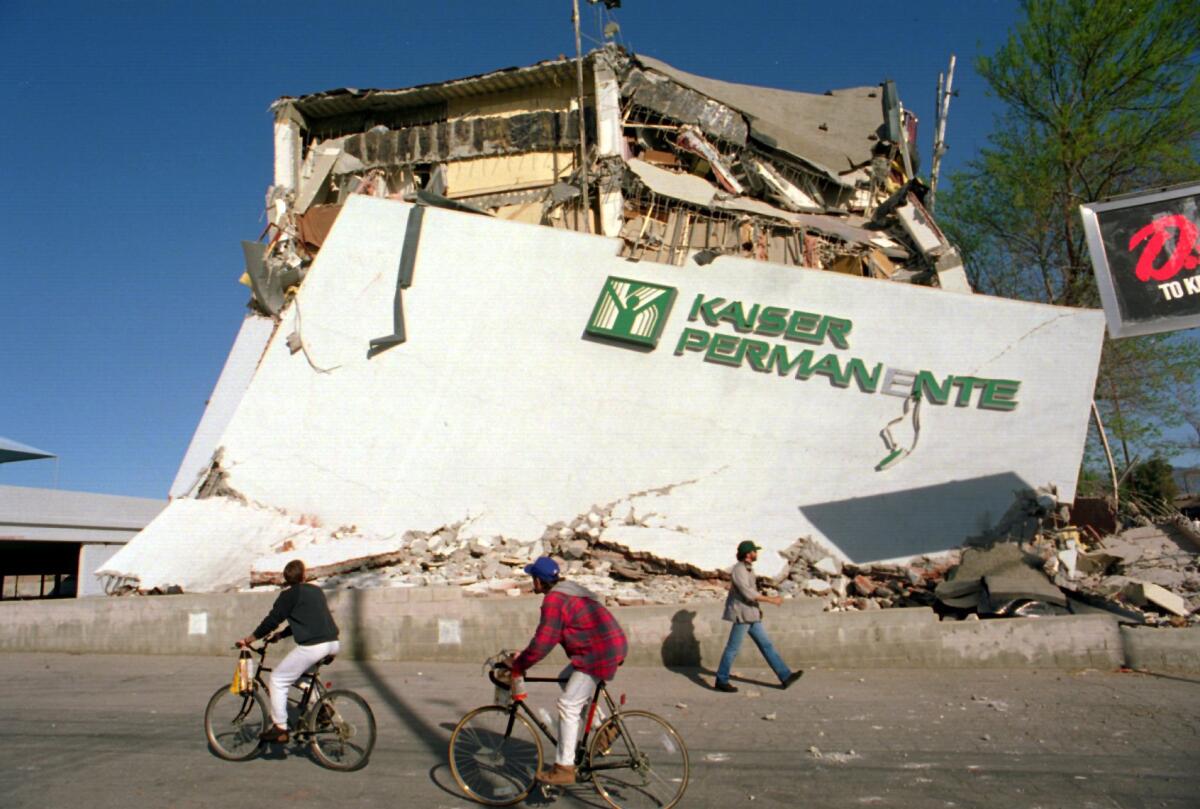Earthquake risk: L.A. formally requests list of concrete buildings

The city of Los Angeles sent a request Thursday formally asking a UC Berkeley engineering professor for a list of concrete buildings that could be at risk of collapsing in a major earthquake.
A team of researchers, led by Jack Moehle, have a database of about 1,500 concrete structures in Los Angeles but have so far refused to release it. Seismic experts say obtaining the list is critical for the city to begin tackling the problem.
Structural engineers have said the collapse of a single concrete building “has the potential for more loss of life than any other catastrophe in California” since the 1906 San Francisco earthquake. Hundreds could die in a single building collapse.
FULL COVERAGE: California earthquake safety
The request turns up the pressure on the publicly funded researchers to disclose their data and comes at Mayor Eric Garcetti’s instruction.
In the letter to Moehle, the city’s top building official, Raymond Chan, asked for “any available data, including available lists of properties or structures that may assist the city in evaluating its building inventory.”
Chan acknowledged the university’s research may not be complete and did not evaluate each building’s structural integrity, but he added “the information may be useful to our department and the city.”
Backed by a $3.6-million grant from the National Science Foundation, Moehle and his team have been working since 2006 on the concrete issue and have identified the 1,500 potentially vulnerable concrete buildings in Los Angeles as part of their studies. By the most conservative estimate, as many as 5%, or 75 buildings, could collapse in a major earthquake, according to the scientists’ figures.
Los Angeles officials have known about the threat of concrete buildings since the 1971 Sylmar earthquake when parts of the new Olive View Medical Center collapsed, exposing a design flaw that allows concrete columns to crumble during shaking.
But several attempts to create a list of vulnerable concrete buildings failed after opposition from property owners concerned about the high cost of retrofitting.
After a report in the Times this month, the threat of concrete buildings has received renewed attention at City Hall.
The Times requested the researchers’ list, but Moehle declined to disclose it, citing concerns about lawsuits by property owners and saying the information was incomplete.
Garcetti initially said he was also concerned about liability if the city obtained the list and that he wanted to proceed cautiously. But he later instructed the Department of Building and Safety to ask for it. Moehle refused that request, too.
The University of California said in a statement Friday it would be willing to talk about the data, but wanted a formal request and explanation for how the city “might use the inventory.”
Meanwhile, Councilman Bernard C. Parks called for the city to demand the list. He said now that the city knows there’s information available, it would be irresponsible for the city to do nothing.
“Whoever made the original call, I don’t think they should stop and say ‘Well, they didn’t speak to me, so I quit,’” Parks told The Times.
An article published in the UC Berkeley student newspaper cast doubt on the city’s intentions when it quoted the city’s Department of Building and Safety spokesman saying the city didn’t really want the data.
“As far as I know, if they don’t want to share their list with us, that’s fine,” Luke Zamperini told the Daily Californian. “We wouldn’t be putting it to any kind of good use anyhow.”
When asked about the quote, Zamperini said the statement was not reflective of the department’s views.
Garcetti’s office cleared up any misunderstanding with the letter sent Thursday by the building department’s head official.
In addition to asking for the list, the city’s top building official asked to meet with the university scientists to discuss the request and “to reach the common goal of providing seismically safe structures in the City of Los Angeles.”
ALSO:
Mayor Garcetti suggests czar for earthquake preparedness
UC quake researchers refuse to share building data with L.A.
LaBonge, Parks call for seismic study of concrete buildings
More to Read
Sign up for Essential California
The most important California stories and recommendations in your inbox every morning.
You may occasionally receive promotional content from the Los Angeles Times.













